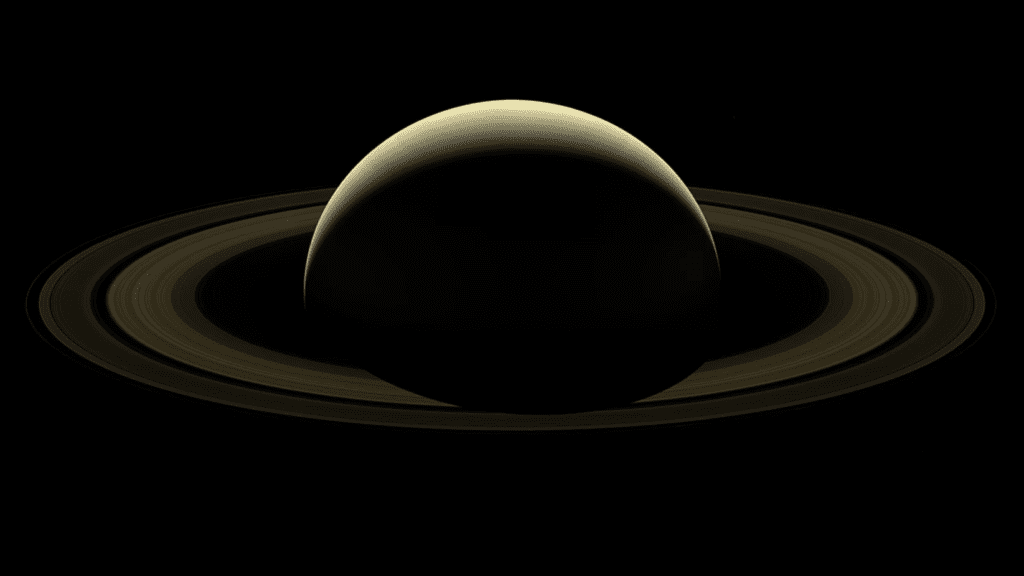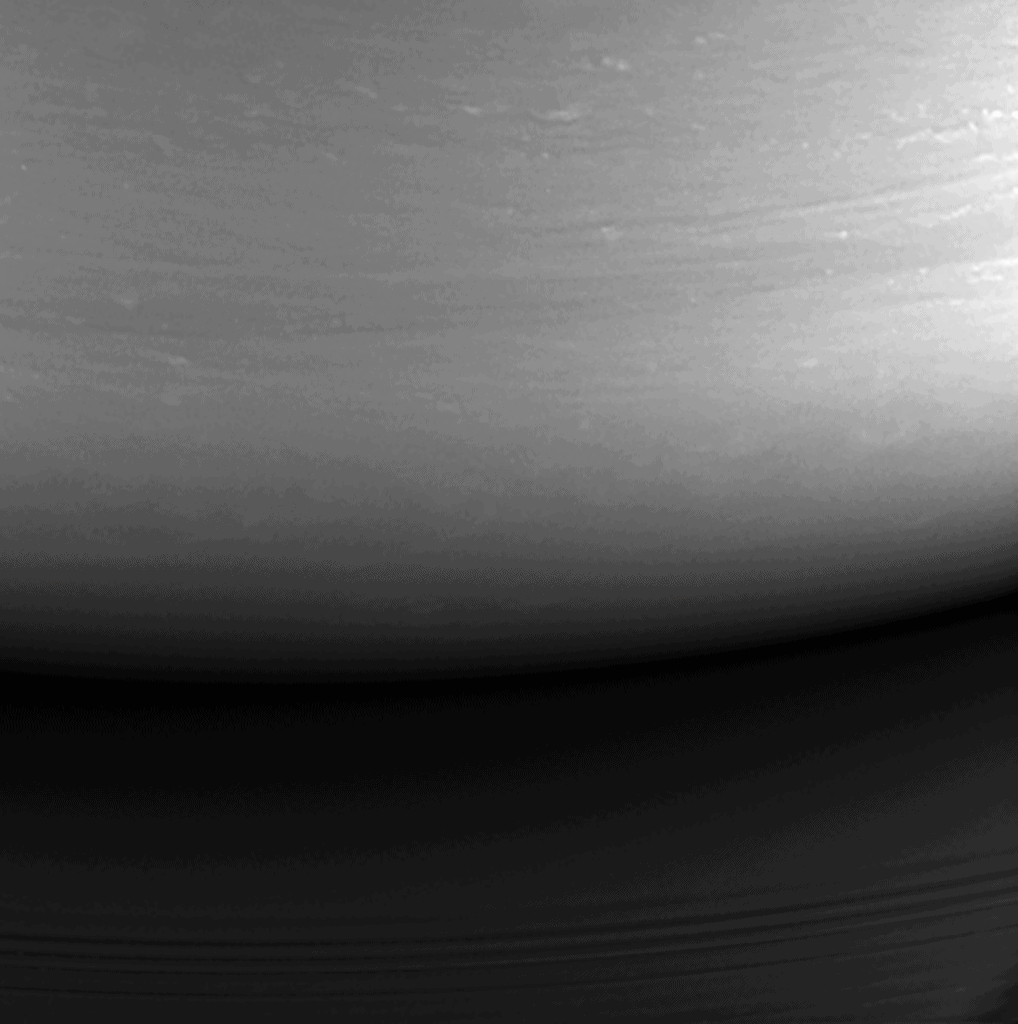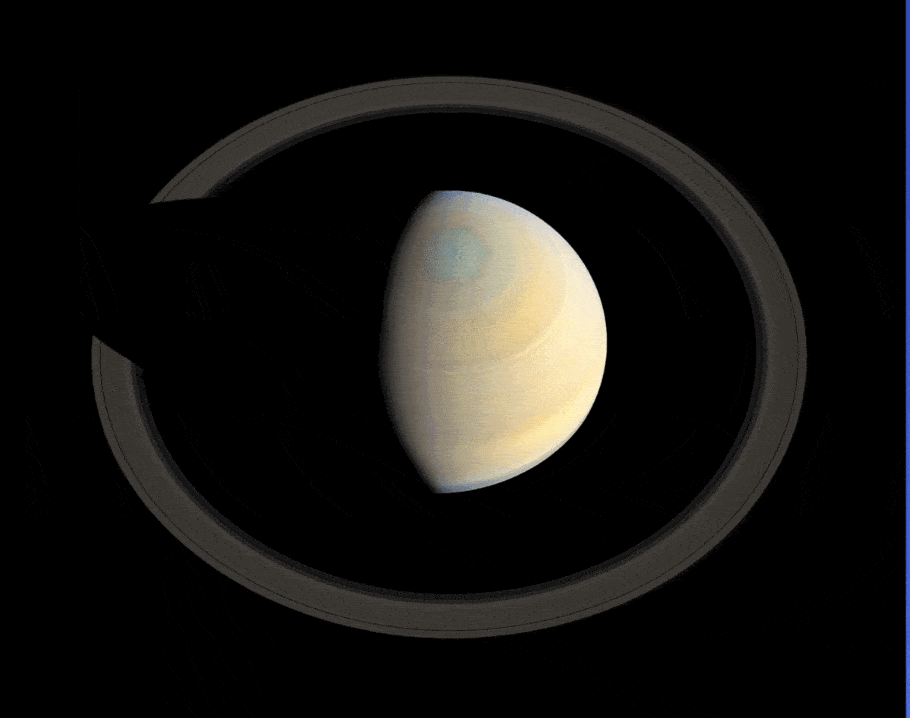
Saturn’s rings have fascinated astronomers ever since Galileo Galilei first discovered them with his 20-power telescope. At the time (in 1610), he thought the rings were large moons on either side of the planet, writing “I have observed the highest planet [Saturn] to be tripled-bodied. This is to say that to my very great amazement Saturn was seen to me to be not a single star, but three together, which almost touch each other.”
Decades later, Christaan Huygens used a much more powerful telescope than Galileo, finding that Saturn was in fact surrounded by “a thin, flat ring, nowhere touching, and inclined to the ecliptic.”
Slowly, year by year, astronomers have come up with progressively better observations of Saturn’s rings. So much so that four centuries after Galileo’s discovery, humans have managed the incredible feat of sending a spacecraft to the gas giant’s orbit.
For 13 years, the Cassini spacecraft has looped around the ringed planet. In September 2017, it finally ran out of fuel and NASA sent it on a controlled path towards the planet.
Although the leap destroyed Cassini, it managed to beam back important data about Saturn’s elusive rings as it passed through them. A new study analyzed some of that precious data, revealing new interesting insights about the physics that glue the debris rings together as well as how much mass they trap.
During its final maneuver, Cassini looped in and out of Saturn’s rings. Previously, it had only observed them from outside their range. By calculating the gravity of the bands which jostled the spacecraft between them and Saturn, scientists were able to come up with the most precise estimate of the mass of the rings to date. Combined, all that rock and ice that form Saturn’s bands has a mass about 2,000 times smaller than the moon. That may be surprising to hear considering how large they seem with a telescope, but the particles that comprise them are mostly tiny, like grains of sand (although they can be the size of boulders or even small mountains) and are widely spaced apart in certain areas.
According to the authors at NASA’s Jet Propulsion Laboratory, the estimate has an error margin of about 25%. That’s quite a lot, but even so, it’s the most accurate figure that we currently have.

This new estimate published in the journal Science also helps answer a long-standing puzzle: how old are the rings? The most massive the rings, the older they should be. Not too long ago, researchers believed that Saturn’s band formed when the planet itself coalesced into its current shape, about 4.6 billion years ago. The new study suggests that the rings are much younger than that — somewhere between 10 million and 100 million years old. This means that if humans were alive during the age of the dinosaurs, our instruments would have seen a lonely Saturn, without its signature bands.
All of this leads us to another mystery: who put a ring on that planet? The lucky fellow may have been anything from a moon, comet, asteroid, or multiple things at once which strayed too close to the planet and was shattered to smithereens by the massive gas giant’s tugging forces. To really know the answer to this question, Cassini would have had to collect a sample from Saturn’s bands and analyze them. Perhaps a mission in the future might actually do this — but it might take several decades.
One thing to note is that Saturn will one day lose its rings. According to a study published in the journal Icarus, the ice particles that make up the rings are being pulled into the planet at a rate that could fill an Olympic-sized swimming pool every half hour. The rings could be gone as soon as 100 million years from now.



